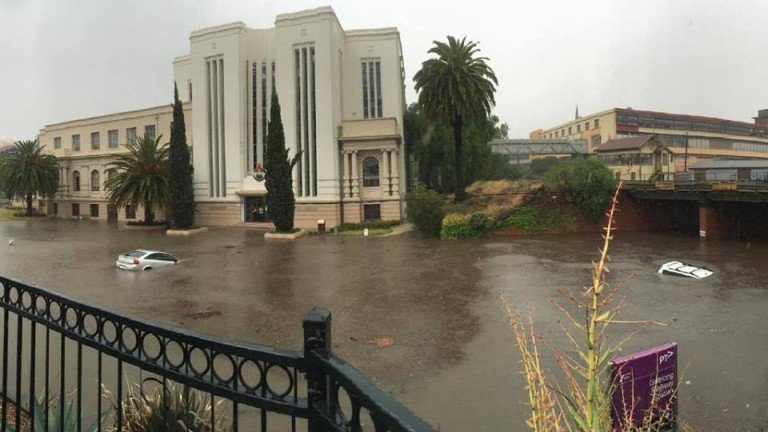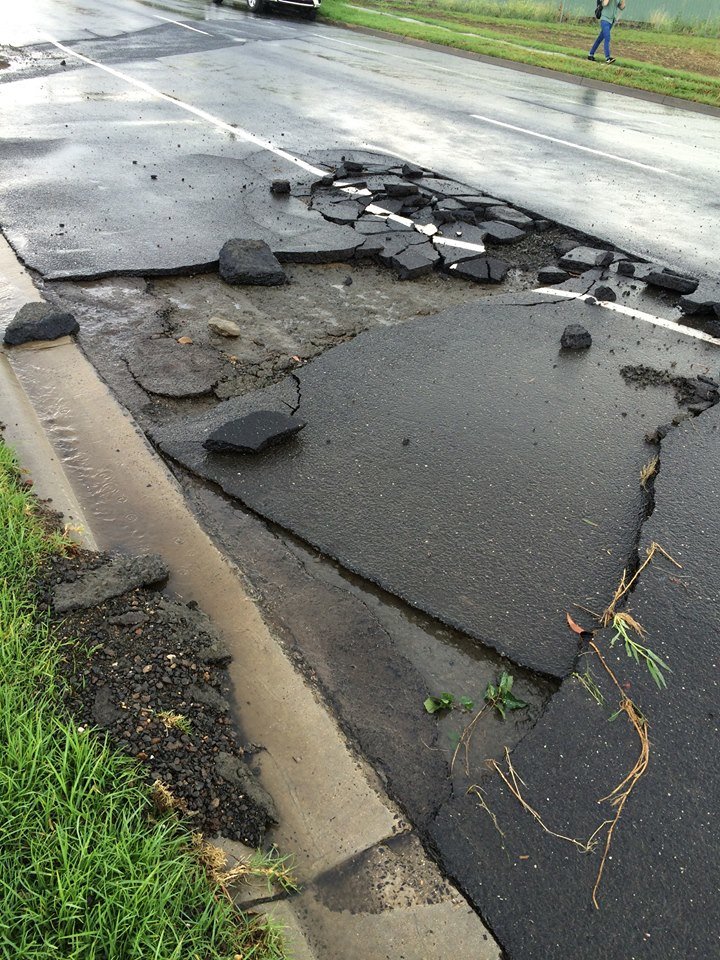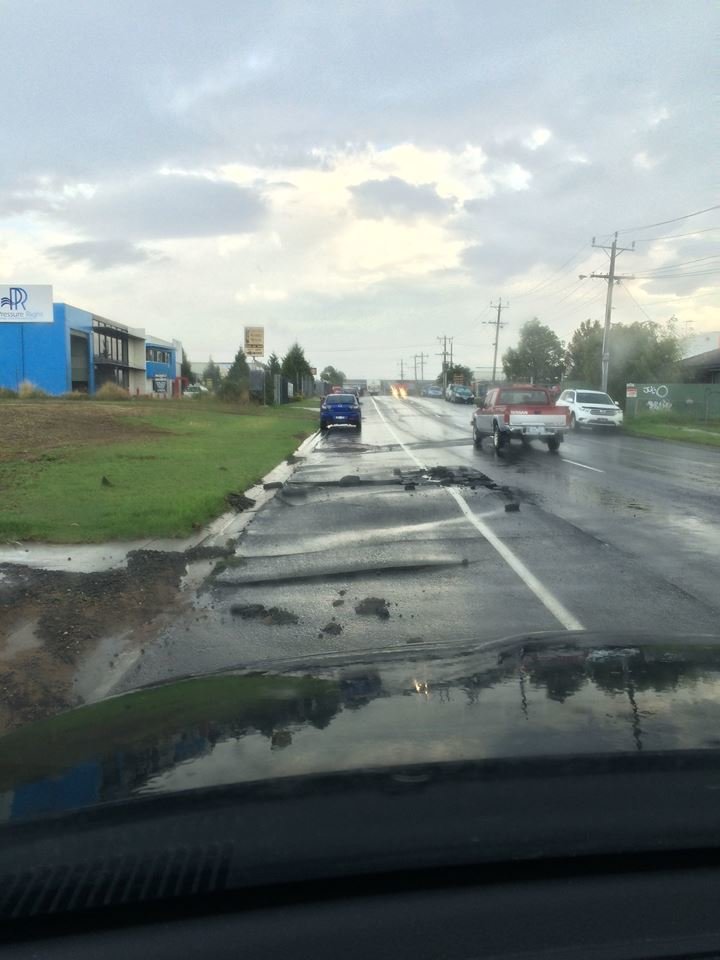Avalon, a suburb of the city, recorded 72 mm of rain between 16:00 to 17:00 local time on 27 January. Geelong Racecourse recorded over 40 mm of rain between 15:00 and 17:00.
The rain caused severe flash flooding throughout the city and suburbs. Emergency services responded to over 500 requests and had to carry out 15 flood rescues.
The City of Greater Geelong said that "Yesterday's storm was considered a 1 in 100 year event with double the January monthly average rain falling in just 1 hour".
Stefan Delatovic, Manager of Emergency Management Communications for Victoria State Emergency Service (VICSES) said:
"This dramatic storm has been characterised as a "once in a century event", but it's important to say that this is a measure of magnitude, as in 'a storm this severe has a one-in-100 chance of occurring in any given year'. It doesn't mean another storm like this isn't expected for another 50 years. More rain is forecast for today, another storm like this could pop up anywhere in Victoria with little warning".
7 People Trapped in Cars
Victoria State Emergency Service personnel were praised for their efforts during the storm by Geelong's mayor.
Victoria State Emergency Service (VICSES) responded to over 520 requests. Amongst these calls for help were 15 people rescued from floodwater, including seven people who were trapped in cars.
Stefan Delatovic, said that "volunteers from around Victoria flooded in to help their Geelong peers to clear these incidents overnight. We're indebted to their service".
Stay Away from Floodwater
Throughout the storm and in the aftermath, VICSES stressed the importance of staying away from flood water, especially for those in vehicles. Via social media they said:
"If you can't seen the road, you can't guarantee that it is safe. Never drive through floodwater".The photos below were taken in North Geelong on 28 January, after the floodwater had receded. Photo credit: VICSES
In a statement earlier today, Mr Delatovic said:
"If you only do one thing, make it an easy one: commit to never entering floodwater. Floodwater moves quickly, picking up dirt and debris as it goes. Television news coverage of Geelong's storms shows vehicles being swept away. Imagine if you were in them and how scary that would be. Our volunteers will try to save you if you're trapped in a vehicle being tossed around by floods at obvious risks to themselves, but don't put their lives in danger by entering it willingly.Melbourne Avoids Storm Damage
TV coverage of last night's storm included footage of people driving through floodwater, with many neglecting to warn of the severe risk.. Of chief concern to emergency managers is footage of a man surfing on floodwater which often cropped up as a light-hearted end to bulletins, characterised as a bit of fun. Obviously the man in question was having fun, and it's not the media's job to do anything more than accurately depict what is occurring, but flood stories including images of "locals enjoying the water" are common, and they normalise this activity.
Floodwater can include fast-moving sheets of corrugated iron, or a concealed storm drain creating an inescapable current. If you cut yourself, you're prone to infection because the water is filthy. Current images of the receding floodwater in Geelong demonstrate how damaged roads can become. If you can't see the road, you can't guarantee that it's safe.
The media shouldn't stop broadcasting images of people playing in floodwater, or driving through it, but we all need a reminder of how dangerous it is.
Floods, storms and fires are unpredictable and they will inflict tragedy upon us. Let's not give them any help".
For a while yesterday it looked like storms were also going to hit Melbourne and other areas east of Geelong. Australia Bureau of Meteorology (BoM) warned that very dangerous thunderstorms were detected on weather radar near Pakenham and the area north of Pakenham. These thunderstorms are moving towards the southeast. Destructive winds, heavy rainfall that may lead to flash flooding and large hailstones are likely.
Fortunately the threat passed and BoM cancelled a severe thunderstorm warning on Thursday afternoon (local time).
"A more general severe thunderstorm warning remains current for the West and South Gippsland and parts of the Central, Northern Country, North Central and North East districts," the BoM said.






Reader Comments
to our Newsletter